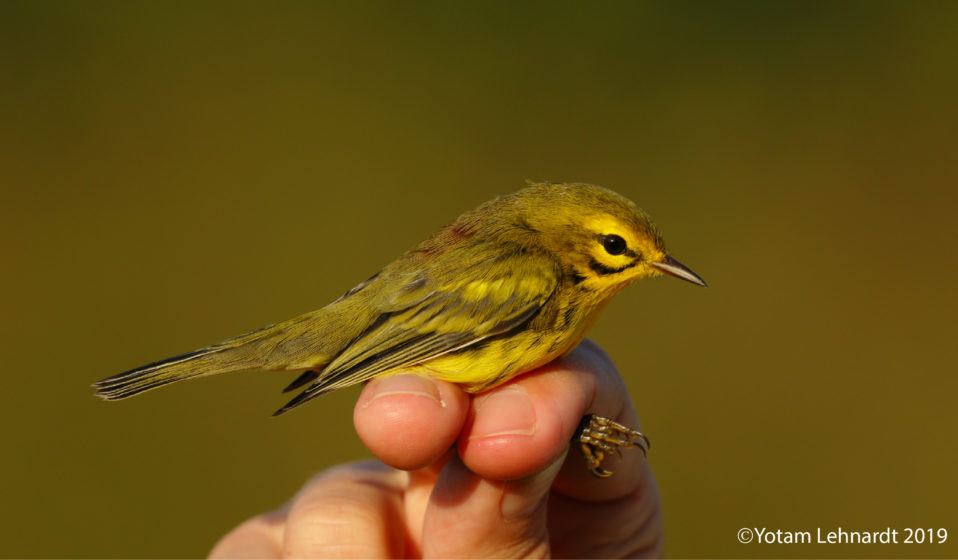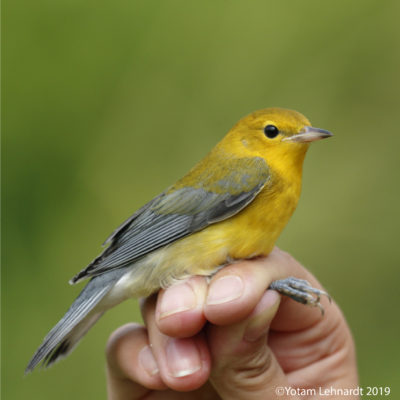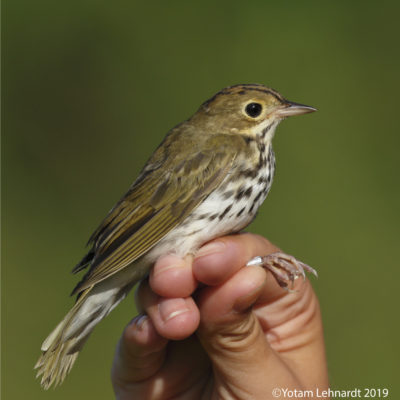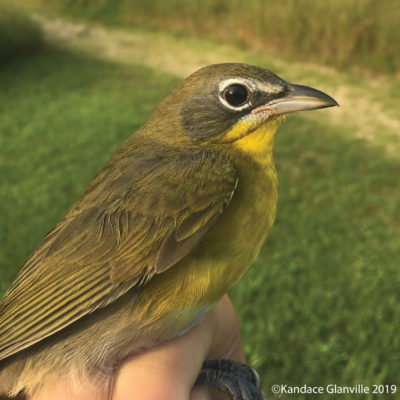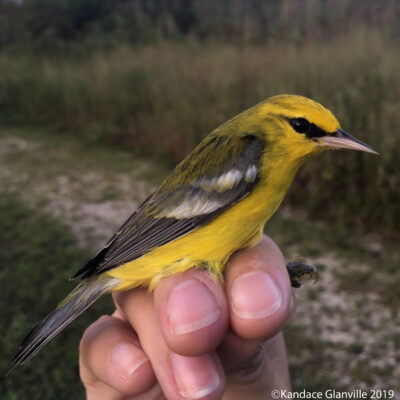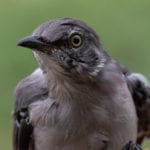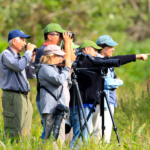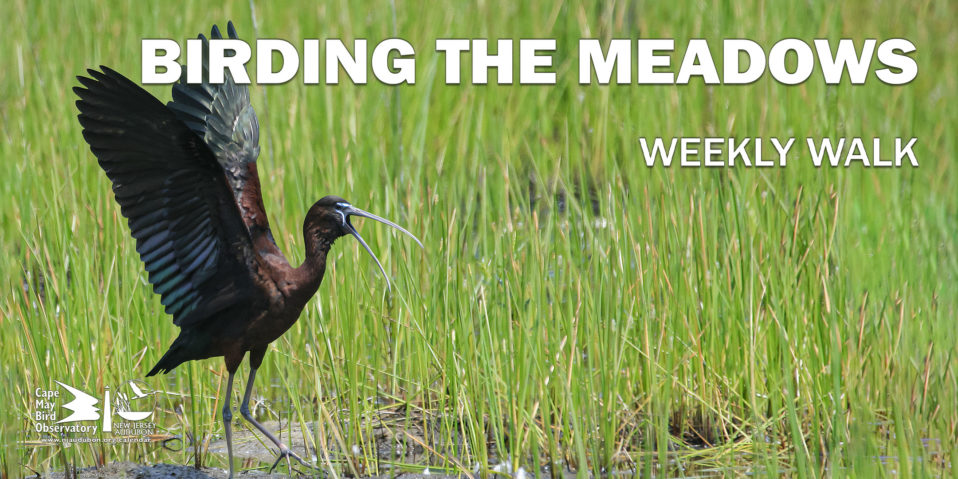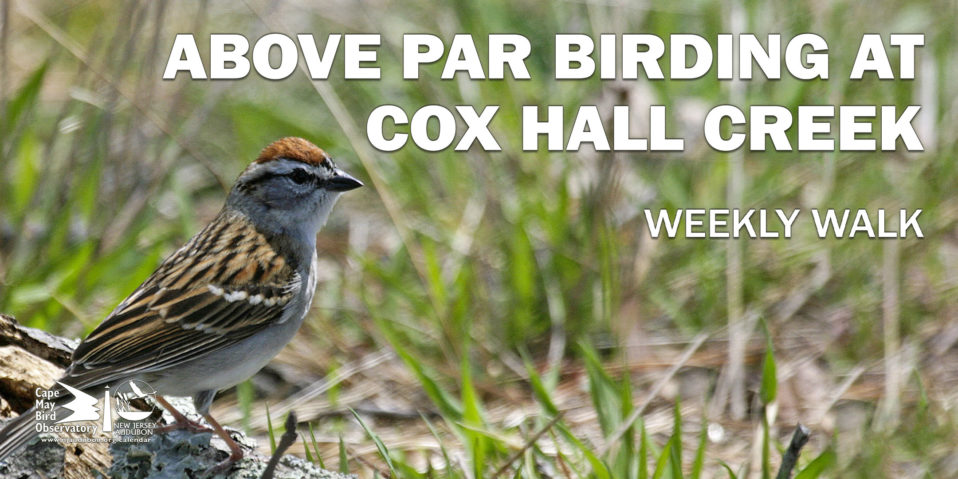Photo: Prairie Warbler
In 2018, New Jersey Audubon’s Cape May Bird Observatory and NJA’s Research Department launched the Cape May Songbird Banding project in partnership with Cellular Tracking Technologies and The Nature Conservancy. After last year’s inaugural fall migration banding season at the Nature Conservancy’s South Cape May Meadows, a couple of things became clear:
- The remnant coastal maritime forest, scrub shrub and marsh habitats prevalent at the Meadows are extremely attractive to many species of songbirds and other landbirds during southbound migration stopovers on the Cape May Peninsula.
- Data collected at the Cape May Banding Station will provide critical information on habitat use of migrant landbirds that can be used to develop strategies to protect other areas that support these habitats.
- The banding station catches a lot of birds.
This year we increased the number of full-time staff from one bander-in-charge to two banders-in-charge plus a banding assistant. With David La Puma taking a position with Cellular Tracking Technologies, David Mizrahi, NJ Audubon’s VP for Research will play an active role at the banding station. Similar to last year, NJ Audubon and CMBO staff will pitch in on busy days and provide coverage at the station so that the staff can have regular days off. Of course, we’ll rely on help from our large contingent of volunteers, who provided tremendous support last year.
Here’s a brief introduction to this year’s banding team:
Blaine Carnes (Bander-in-charge): Blaine has 11 years of banding experience at locations throughout the Americas, including high-volume migration sites such as Santa Alejandrina Marsh Bird Observatory in Veracruz, Mexico, Powdermill Avian Research Center in western Pennsylvania, and Kiawah Island Banding Station in coastal South Carolina.
Yotam Lenhardt (Bander-in-charge): Hailing from Israel, Yotam was Chief Bander at the International Birding & Research Center Eilat a high-volume banding station in southern Israel. More recently, he was Chief Bander and research coordinator at the Jerusalem Bird Observatory, where he will return after his stint in Cape May.
Kandace Glanville: Kandace recently graduated from The Ohio State University with a degree in wildlife science. She’s worked on with Golden-winged Warblers in Pennsylvania, pipeline right-of-way avian surveys in eastern Ohio, bird banding with Black Swamp Bird Observatory, and Kirtland’s Warbler monitoring in Wisconsin.
This year’s banding season kicked off on August 14, and during the first two weeks we captured nearly 500 birds of 34 species, with highlights such as a young American Woodcock and 11 different species of warblers. Some of the totals shown in the Table below represent recaptures of previously banded birds (some from last year!), and a significant number of hummingbirds, the most numerous of the species caught. As the season progresses, we’ll post highlights from the station and updates species and total number caught. So, stay tuned!
| Species | New Birds |
| Ruby-throated Hummingbird | 67 |
| American Woodcock | 1 |
| Alder Flycatcher | 6 |
| Willow Flycatcher | 5 |
| “Traill’s” Flycatcher (Alder/Willow) | 11 |
| Least Flycatcher | 1 |
| Great Crested Flycatcher | 2 |
| White-eyed Vireo | 4 |
| Red-eyed Vireo | 2 |
| Carolina Chickadee | 4 |
| Blue-gray Gnatcatcher | 4 |
| House Wren | 4 |
| Carolina Wren | 18 |
| Gray Catbird | 45 |
| Northern Mockingbird | 3 |
| Veery | 1 |
| American Robin | 2 |
| House Sparrow | 1 |
| American Goldfinch | 4 |
| Chipping Sparrow | 1 |
| Field Sparrow | 5 |
| Ovenbird | 12 |
| Worm-eating Warbler | 2 |
| Northern Waterthrush | 60 |
| Blue-winged Warbler | 2 |
| Black-and-white Warbler | 14 |
| Prothonotary Warbler | 2 |
| Mourning Warbler | 1 |
| Common Yellowthroat | 31 |
| American Redstart | 56 |
| Yellow Warbler | 16 |
| Prairie Warbler | 29 |
| Northern Cardinal | 14 |
| Indigo Bunting | 3 |




